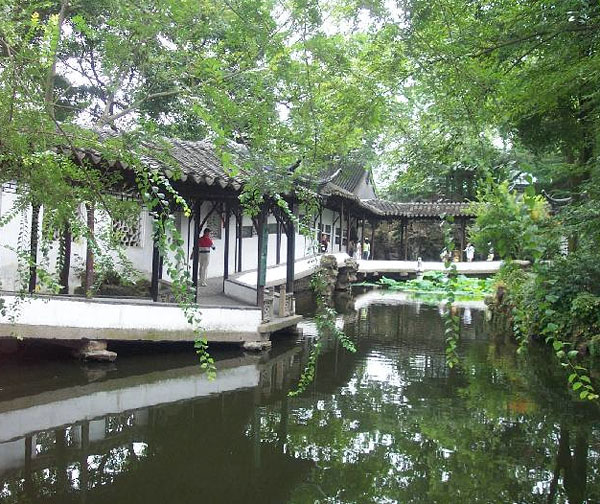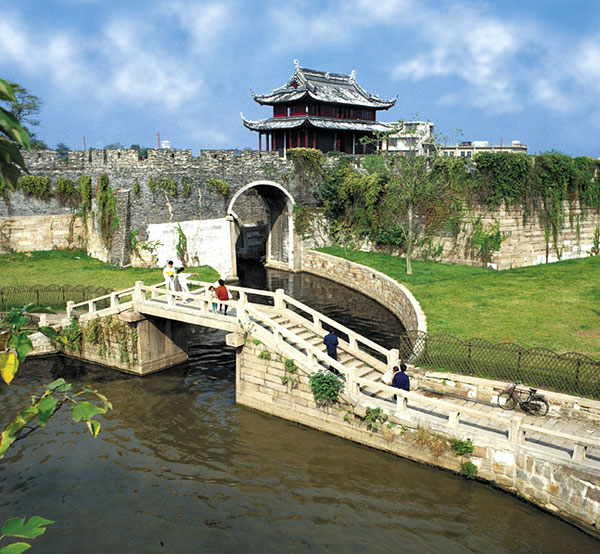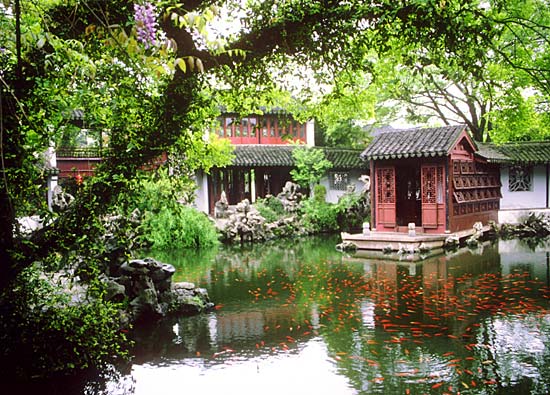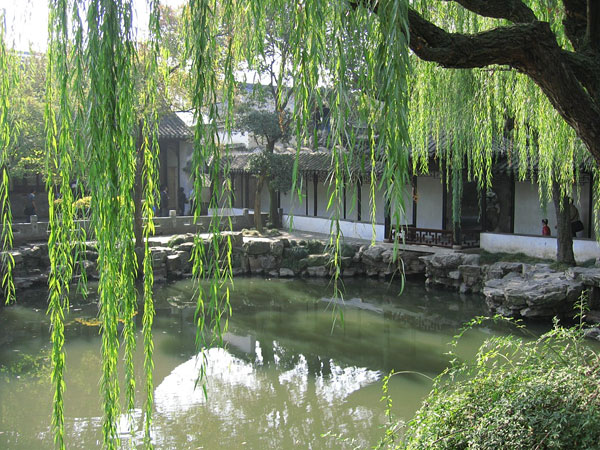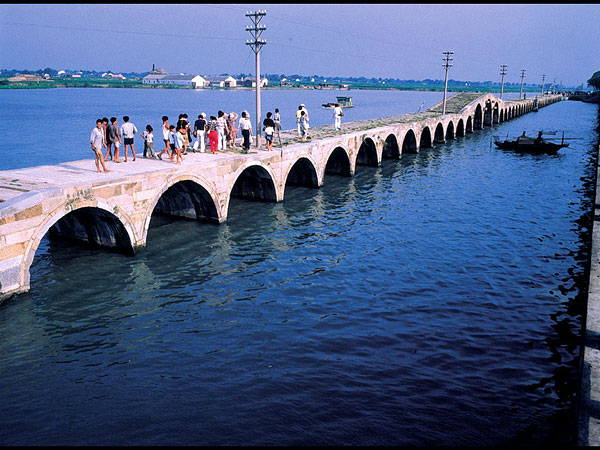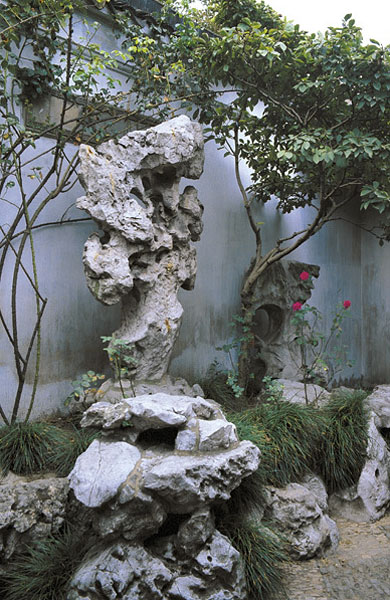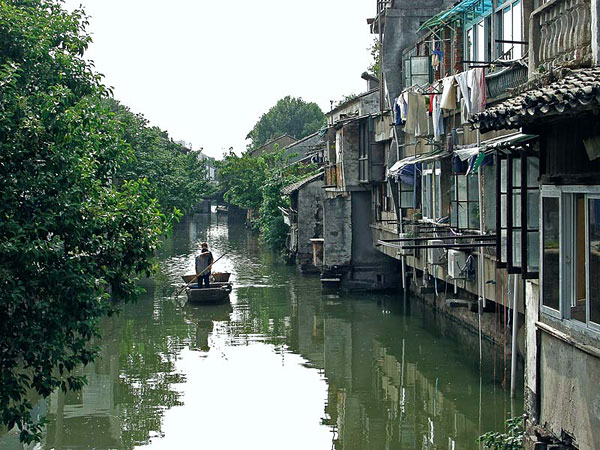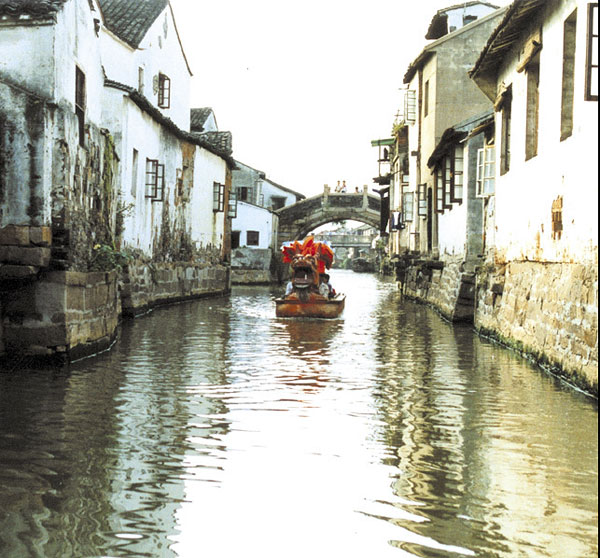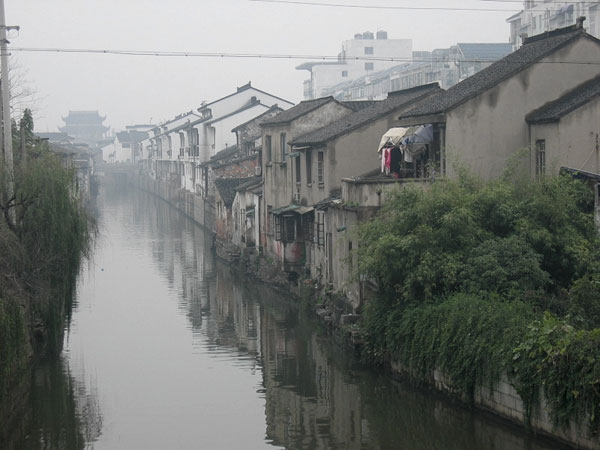In 514 BC. e. the ruler of the ancient kingdom Wu ordered his minister to build a city that would have no equal in beauty. The ruler's command was carried out. This is how a city arose in China Suzhou- a city of parks, gardens and pagodas.
Suzhou is the oldest city in the Yangtze River basin, older than Shanghai, from which it is located only eighty kilometers. There are many pagodas here. The one that rises in the very center has a romantic name - Burning Beams Pagoda.
A small fragment of the fortress wall and Pan-Men Gate... Pan-Men is the oldest yet well-preserved gate in China. Their distinctive feature is that these are the so-called double gates, that is, one part of them is on the water, and the other is on land. They were created in the 6th century BC. e. The part of the gate that is on land is with a secret. In times of all kinds of wars and civil strife, when the enemy wanted to take Suzhou by storm, these gates were thrown open, and small secret ones, which actually led to the city, were closed. The enemy burst into the territory of the fortress, but ended up in an absolutely enclosed space, becoming an easy prey for the archers who stood on the fortress walls.
Tiled huts stretch along the banks of the canals. In the center, they are rather actively demolished. In place of the old houses, luxurious mansions grow up.
The canal system, which crosses almost the entire city, was originally intended to regulate river flows. Floods in Suzhou were unfortunately frequent. This system was built over three centuries - from the 8th to the 5th century BC. e. Preserved information that already in our era, in the 17th century, there were 1000 bridges in Suzhou. Of these, 300 were within the city walls. That is, it turns out that 1 sq. km, there were up to 15 bridges. The old wooden bridges, of course, have not survived, and many stone ones still stand.
In the southeastern part of the city, through the Great Chinese Canal, Precious Belt Bridge, built in the 9th century. According to legend, the official in charge of building the bridge was forced to sell his precious belt, made of jade, in order to complete the work. The length of the bridge is 317 meters.
Suzhou was once a favorite vacation spot for the Chinese nobility. The courtiers and high-ranking officials built houses and palaces here and laid out magnificent gardens around them. In the 15th century, there were more than 200 of them in the city. A little more than 50 have survived to this day. They are concentrated in the central part of the old city. In 1997, many of Suzhou's gardens were included in the UNESCO World Heritage List.
Three elements must be present in a Chinese garden: water, plants, stone.
Water is a lake, pond, stream, waterfall, or both. Plants can be very different. Their choice is largely determined by the symbolic meaning that the gardener puts into his creation. For example, weeping willows, which are planted along the banks of water bodies, symbolize femininity. Pine is a symbol of strength and longevity. Lotus is for mental fortitude. A combination of ordinary and dwarf trees is characteristic of the Chinese garden.
A very interesting detail of the Chinese garden is these stones, which are called taihushi, that is, stones from Taihu lakes... They were created in the following way: a piece of rock was cut down, in which several holes were made, after which this piece was placed on the bottom of a river or lake. After several years, and maybe even decades, the stone was taken back. As a result, it turned out to be quite bizarre, but at the same time natural shape.
Pavilions, gazebos and tea houses are harmoniously integrated into the garden landscape. Their names are very poetic: Arbor of waiting for frost, Arbor of water ripples. In the Chinese Suzhou, as in the Italian Pisa, there is a leaning tower. Rather, a pagoda. It was built ten and a half centuries ago and is called Pagoda Temple of Cloud Rocks.
In 1638, during the reconstruction of the seventh, upper, tier of the pagoda, the builders decided to slightly shift it in the opposite direction from the slope and thus move the center of gravity. At first, this brought its positive result, but in general, the decline did not stop. At the moment, the pagoda deviates from the vertical axis by 2m 34 cm.
Marco Polo, who arrived in Suzhou in 1276, left vivid memories of the paradise city of masters, teachers, magicians and saints, a city with six thousand bridges, under which an average galleon could pass, the city - the birthplace of silk.
Today the population of the city exceeds 600 thousand people, and Marco Polo would not recognize his paradise city in this industrial complex.
Nonetheless, Suzhou still retains its ancient charm and is a haven of peace and relaxation to those arriving from Shanghai.
